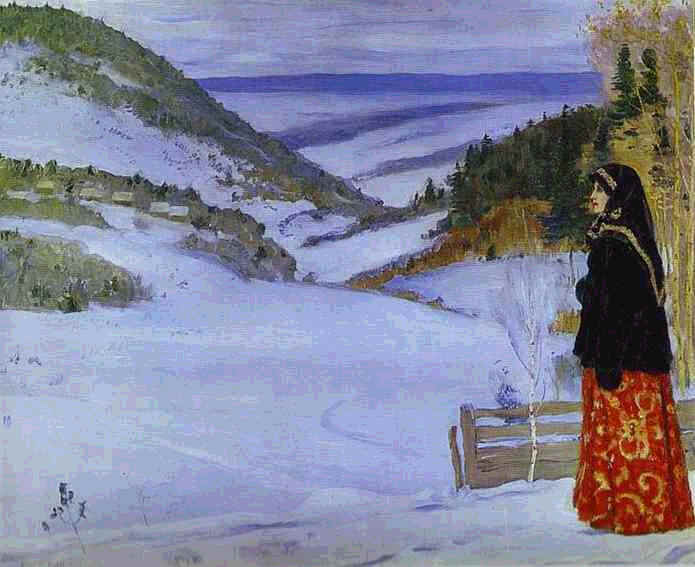
Both in pre-revolutionary and Soviet Russia Mikhail Nesterov was renowned for his portraits and his landscapes. These genres merge in a number of paintings in which Nesterov immerses women in rural settings which are immediately recognizable as quintessentially Russian. The women in question are dressed in traditional Russian clothing.
Winter is a particularly fine example of this trend within Nesterovs oeuvre. This 1910 canvas depicts a woman who moodily stares in front of her, oblivious of the fairytale-like Russian winter landscape against which she is set. The snow-white of the fields merges perfectly not only with the soft tones of the twilight sky, but also with the womans pale face and faded shawl.
If the central figure in this painting pays no attention to